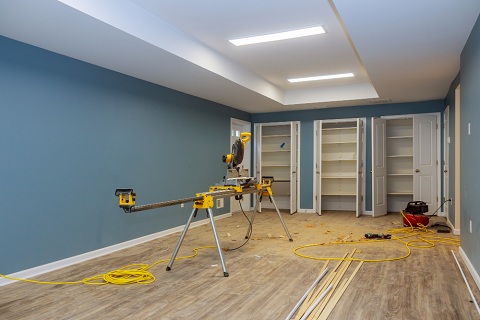Embarking on home improvement projects is a daunting yet essential aspect of prudent financial management. To navigate this process effectively, a comprehensive budget is crucial. By meticulously inspecting every facet of your residence, you can pinpoint where your investment will yield the most significant structural integrity and livability returns. Including estimates for materials and labor fees in your financial plan ensures a realistic overview, while a contingency fund safeguards against unforeseen expenses. As you progress, documenting each cost maintains budget adherence and reveals potential savings opportunities. This systematic approach sets the stage for a successful and cost-effective home improvement journey.
Crafting a Comprehensive Budget
Creating a budget for home improvement projects can seem daunting, yet it’s essential for wise financial management. To get started:
- Inspect each aspect of your residence to understand where your attention and funds are best spent.
- Prioritize projects that directly affect your home’s structural integrity and livability.
- As you outline your financial plan, include estimates for materials—which can be gauged using resources from trusted retailers like Home Depot—along with any labor fees if enlisting professional assistance.
Furthermore, to avoid surprises, entail an additional contingency fund within your budget, which accounts for about 10% to 20% of the total expected expenditure. Regularly revisit and adjust your financial plan as you progress, documenting each cost to avoid overlooking details. This meticulous approach to tracking finances keeps you within your budget and makes it easier to identify potential savings opportunities.
Seasonal Home Maintenance and Savings
Seasonality is pivotal in home maintenance, offering unique opportunities to enhance efficiency and save money. Spring, characterized by rejuvenation, is an optimal time to assess your home for any damages caused by winter storms, with tasks like cleaning gutters and inspecting the roof taking precedence to prevent water damage. Summer is the perfect backdrop for projects focused on energy efficiency; for instance, installing energy-efficient windows or enhancing insulation can help keep your home cool while reducing air conditioning costs. When leaves begin to fall, prepare for the colder months by servicing your heating system and ensuring your home is well-sealed against drafts. It’s also a prime time to check your home’s exterior paint and perform any needed touch-ups before winter rains or snow. Finally, during winter, focus on indoor maintenance and take preventative measures like insulating pipes. By completing maintenance tasks specific to each season, you capitalize on the opportunity to keep home repair costs low while preparing your home for the demands of the upcoming season.
The Role of Technology in Home Improvements
In an age of all-pervasive technology, leveraging it in home improvement efforts can yield significant benefits. Incorporating smart home technology not only streamlines household operations but also contributes meaningfully to cost savings. Smart thermostats, for instance, learn your schedule and preferences, adjusting the home’s temperature for optimal energy use and comfort. Similarly, investing in LED lighting systems, which consume a fraction of the power of traditional bulbs, can brighten your space while dimming your electricity bills. Beyond hardware, digital tools provide robust project planning and management platforms, often featuring budget trackers, design software, and task schedulers. These assets give homeowners powerful capabilities to seamlessly manage their projects from conception to fruition, all at their fingertips. As you explore various tech solutions, prioritize those that match your lifestyle, needs, and budget, understanding that these tools should be facilitators of efficiency, not merely gadgets for convenience.
Finding Deals and Discounts on Home Improvement Supplies
One of the cleverest ways to curb home improvement expenditure is by mastering the art of finding deals and discounts on supplies. One can begin by browsing warehouse club stores, local hardware shops, or even online marketplaces where overstocked or gently used items are sold at reduced prices. Timing plays an integral role in snapping bargains; look out for seasonal promotions, holiday sales, and clearance events. In addition, many retailers offer loyalty programs with rewards or discounts for frequent shoppers, which can yield significant price reductions over time.
Energy-Efficient Upgrades That Pay Off
Embarking on energy-efficient upgrades offers immediate savings and contributes to your home’s longer-term value and comfort. Commence with basics—an inspection and upgrade of insulation and sealing can drastically minimize heat loss, reducing the need for excess heating or cooling. While initially more expensive, energy-efficient appliances prove their worth by consuming less energy and water, lowering utility bills. Conduct thorough research to understand which upgrades are most beneficial; often, simple changes like adding a programmable thermostat or transitioning to low-flow fixtures can make a measurable difference. Furthermore, considering the lifespan of appliances and systems, investing in high-quality, energy-efficient options will likely outlive and outperform their cheaper, less efficient counterparts, offering cost savings over their operational life. Remember, while the up-front costs of these changes may appear daunting, the gradual but steady return in the form of lower utility bills will validate these eco-friendly choices.
Utilizing Government Rebates and Tax Incentives
Many homeowners need to pay more attention to the financial incentives the government offers for energy-efficient home upgrades. These incentives are designed to encourage the adoption of eco-friendly practices. Qualifying for such rebates and tax credits can often seem complex, but taking the time to understand the requirements could result in significant financial returns. Checking with local utility companies and government websites can provide a breakdown of the available incentives based on your location and the type of home improvements you plan to make.
Maximizing Small Spaces for Better Functionality
Effective space management in smaller homes or rooms necessitates a blend of creativity and practicality. Innovative storage solutions, like wall-mounted shelves or multi-purpose furniture with built-in storage, can dramatically alter the perception and utility of a space. The goal is to minimize clutter and make every square inch count, often rethinking traditional furniture arrangements in favor of more space-efficient options. Consider retractable or foldable furniture that can be tucked away when not in use or custom-built units tailored to fit unique spaces. The key is to embrace a minimalist approach, removing what’s not necessary and organizing what remains in an efficient and accessible manner. Doing so can transform even the most confined spaces into inviting and functional parts of your home, reflecting an efficient use of appealing and practical space.
Preparing Your Home for the Future
When planning home improvements, it’s wise to consider current and potential future requirements. Upgrades such as creating an open floor plan, installing task lighting, and ensuring at least one no-step entryway can significantly increase a home’s functionality today and in the future. Aging-in-place considerations, such as walk-in showers and smart home features that assist monitoring and operations, can also add significant value. Even if such needs seem distant, including universal design principles can make your home more accessible and attractive to a wide range of buyers if you should choose to sell. By focusing on timeless, value-adding improvements, you can ensure that your home evolves gracefully with you, providing function and comfort well into the future.
Next Steps: Planning Your Home Improvement Journey
Embarking on your home improvement journey requires meticulous planning, clear goals, and an organized timeline. Start by creating a master plan that outlines each project’s scope, estimated completion time, and associated costs. This document becomes your roadmap, guiding each step and decision you make. As each phase unfolds, maintain flexibility; unexpected challenges may arise, requiring shifts in strategy or timing. Stay communicative with any contractors involved, ensuring you’re promptly making decisions and providing necessary information. Throughout the process, celebrate small milestones and keep your eye on the prize: a beautifully enhanced home that meets your needs and resonates with your style. Ultimately, your financial diligence, planning understanding, and patience will manifest in an aesthetically pleasing space tailored to your lifestyle and priorities.









Find Us on Socials